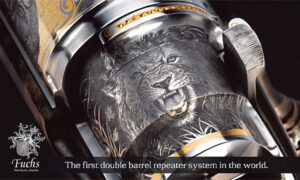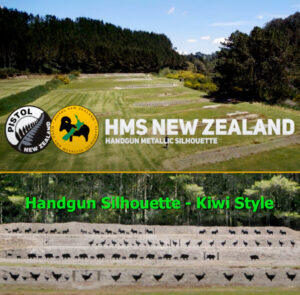The.277 Fury cartridge is designed to be a beast that can shoot flatter and transfer energy to its target from a greater distance. The U.S. Army calls the round “next generation,” and based on .277 Fury’s capabilities, that is not an exaggeration.Compared to the current-issue service cartridges it’s slated to replace like 5.56x45mm and 7.62x51mm, the .277 Fury offers greater energy, improved terminal ballistics and higher ballistic coefficient bullets that slip through the air with ease. The.277 fury was developed by the U.S. Military to give them an edge. The U.S. Army launched the Next Generation Squad Weapon program in 2017 with the aim of replacing the M4 carbine, M249 SAW machine gun and M240 machinegun, all chambered in 7.62 NATO. Both have served the military for many years, the 5.56 since 1963, and the 7.62 since 1954. But warfare has changed. Our military uses effective cartridges, but the 5.56 has been known to have penetration issues in combat. The body armor has become lighter and stronger, so rifle cartridges must also evolve. For the new cartridge in the NGSW Program, the Army specified a 6.8mm bullet or.277 caliber. This is a long-standing desire that has led to failed attempts at the caliber such as the 6.8mm Remington SPC. Picatinny Arsenal designed.277 bullets for the Army, weighing 130 and140 grains with a velocity potential of over 3,100 feet per seconds. The Army also invited firearms manufacturers to submit cartridge and weapon designs for review. These are essentially integrated systems. The specifications for the rifle stipulated that it could not exceed 35 inches in length and could weigh no more than 12 pounds, including accessories and optics. The weapon-cartridge combination also had to be able to penetrate body armor up to 500 meters away, hit targets at 610 meters and suppress targets at 1,200 meters. SIG’s entry into the program was its 6.8x51mm Common Cartridge, chambered in the XM5 Rifle and XM250 Light Machine Gun. SIG’s new cartridge is 2.83 inches long, and can be loaded and fed from any 7.62 NATO detachable box magazines (.308 Winchester). General Dynamics and Textron Systems were among the manufacturers who submitted to the program. SAAMI, an organization that sets standards for ammunition, approved this round in 2020 as the.277 SIG Fury. This sounds a lot sexier and more exciting than 6.8x51mm. In 2022, SIG’s rifles and LMGs were adopted by the Army. Uncle Sam has a brand new cartridge and two new guns with which to fire it. Speed + Energy = Fury Why would the Army want another 6.8mm cartridge then? It already had 7.62 which has been proven in battle, as well as the 6.5 Creedmoor, which is loved by competitive long-range shooters. The answer? The.277 has superior energy and velocity.However, this arms race had a trade-off, especially in relation to chamber pressure.To obtain the Army’s desired properties, the chamber pressur of the.277 Fury must be a mind-blowing 80.000 PSI. Comparatively, 5.56 NATO produces around 60,000 PSI while 7.62 NATO produces 62,000 PSI. Other military calibers don’t come close to the pressure produced by the.277 Fury. The.50 BMG produces only about 53,000 PSI and the.338 Lapua Magnum about 61,000 PSI. Case Study:.277 FuryThe extreme pressure generated by the.277 Fury compelled SIG to rethink their traditional cartridge case design. The company decided to use a hybrid casing, as brass alone was not enough to contain the pressure. The base is stronger and more robust, able to withstand high pressures that would otherwise destroy a brass cartridge case. Fury is not pigeonholed by this radical case design. The cartridge can be downsized to 65,000 PSI, which allows it to use conventional brass cases. What is the benefit of an 80,000 PSI chamber pressure with a 135 grain bullet traveling at 3,000 feet per second? Comparing the ballistics between the.277 Fury and other military calibers such as the 5.56 or 7.62 NATO, you will see that the Fury is a superior round. When you compare the trajectory of the.277 Fury to that of 5.56 and 7.62 NATO, you will see that some bullets are like stones. According to SIG the.277 Fury with a 150 grain bullet has a muzzle speed of 3,120 fps from a 24 inch barrel. This is impressive compared to other military cartridges currently in use. The advertised muzzle velocity for the common 149 grain M80 load of 7.62 from Lake City is 2,790 fps, when fired from a 22,inch barrel. The 62 grain M855 load of the 5.56 can reach a muzzle speed of 3,110 fps if fired from a 20 inch barrel. The 143 grain Hornady 6.5 Creedmoor ELD-X has an advertised muzzle velocty of 2,700 fps if fired from a 24 inch barrel. The trajectory table is based on ShootersCalculator, using a drag of G1, a zero distance of 200 yards, 1.5-inch sighting height, 90-degree crosswind at 10 mph, and zero corrections for the atmosphere. At 1,000 yards, the.277 Fury only drops 253.6 inches. The 6.5 Creedmoor, on the other hand drops approximately 306 inches. The 5.56 NATO, however, drops 421 inches. And the 7.62 NATO, 354 inches. The data is not a lie. The Fury shoots flatter than any of these other service cartridges. It also delivers a huge amount of energy. Made using ShootersCalculator.The kinetic energy of the .277 Fury is about 33 percent greater at the muzzle compared to 6.5 Creedmoor and about 23 percent more than the venerable 7.62 NATO. The Fury is a far superior weapon to 5.56 NATO, with an 83.5 percent higher energy at the muzzle. Why is this important to know? Fast and Fury-ous Ammo OptionsSIG is the only company currently producing ammo for the.277 Fury. This is because the cartridge is so new. SIG offers a long-range load for target shooting and two hunting loads. Two of these cartridges can be used in traditional brass cases, but one of the hunting loads has a high enough pressure to require a hybrid case. While all of these loads are expensive they can be found at prices lower than the MSRPs. According to factory data, the muzzle velocity of a 16-inch bar is 2,750 fps. For a 24 inch barrel it’s 3,000 fps. This round was designed specifically for long-range shooting. This option will cost you about $1.70 a round, since 20-round boxes are about $34. 277 SIG FURY, 130gr VENARI SOFT PIN HUNTINGIf meat is what you’re after, SIG’s 130-grain traditional soft-point option boasts a muzzle velocity of 2,710 feet per second and a muzzle energy of 2.120 foot-pounds. This round is for whitetail deer and up to elk. Each trigger pull costs about $2.10 with an MSRP of $42 for a 20-round box. The round produces 3,120 fps from a 24 inch barrel, and around 3,243 foot-pounds in muzzle energy. It uses a stainless-steel hybrid case. The cost per shot is about $4, but 20-round boxes are about $80. The SIG Sauer CROSS PrS.SIG also offers the MCX Spear, which is chambered for the cartridge. This is the civilian version of the U.S. Army XM7 rifle. The semi-automatic has many of the same features as an AR-15/AR-10, but instead of using a direct gas impingement system like most ARs, it uses a piston with a short stroke. Both rifles are good for long-range target shooting, but I would choose the lightweight bolt-action rifle, especially if you hunt in rough terrain. The SIG MCX SPEAR is the commercial version. At this time, no other rifle manufacturer produces guns chambered in.277 Fury. Gunmakers may be waiting to see if this caliber is popular with the public. Another reason could be due to the cartridge’s nature. It is not as simple as swapping barrels on an action to make a.277 Fury. The pressure generated by this round requires a return to the drawing board for a new receiver design or a complete rework of a gun. It’s a big investment for a cartridge which has yet to prove itself in the mainstream. Wait-and-see might be the best approach for companies that aren’t SIG. Niche Cartridge? Hardly. Both cartridges will be used by the military for a very long time, as they integrate new weapons and ammo. Civilians are too invested to give up either cartridge at this stage. The.277 Fury’s future with the civilian population is likely to continue to grow, especially if more ammunition producers load the round and if more rifles are chambered to it. The Fury has long-range competition and hunting applications but both areas have many rivals in terms of performance and availability. The.277 Fury does have a huge advantage: the U.S. Military support and approval. The.277 Fury may follow the same trend as other military calibers. More NGSW StuffNEXT STEP Download Your Free Storm Tactical Printing Target Pack62 Printable MOA targets with DOT drills – Rifle range in YARDSThis impressive pack from our friends at Storm Tactical includes62 printable targets for rifle and handgun ranges. The grids and bullseyes are in MOA. Subscribe to the Gun Digest newsletter and we will send you your print-at home target pack immediately. Enter your email below.

Offers of the Week on DealFinder 501: AccurateShooter
At the request of our readers, we provide a few” Talks of the Week” on April 28th, 2025BargainFinder 501: AccurateShooter’s Deals of the Week. Our Best Discount choices are available















